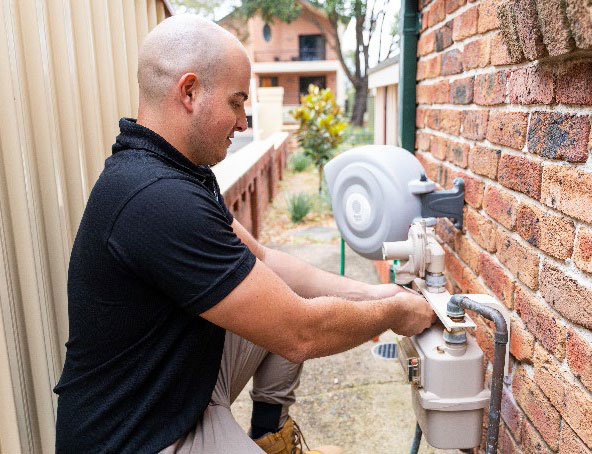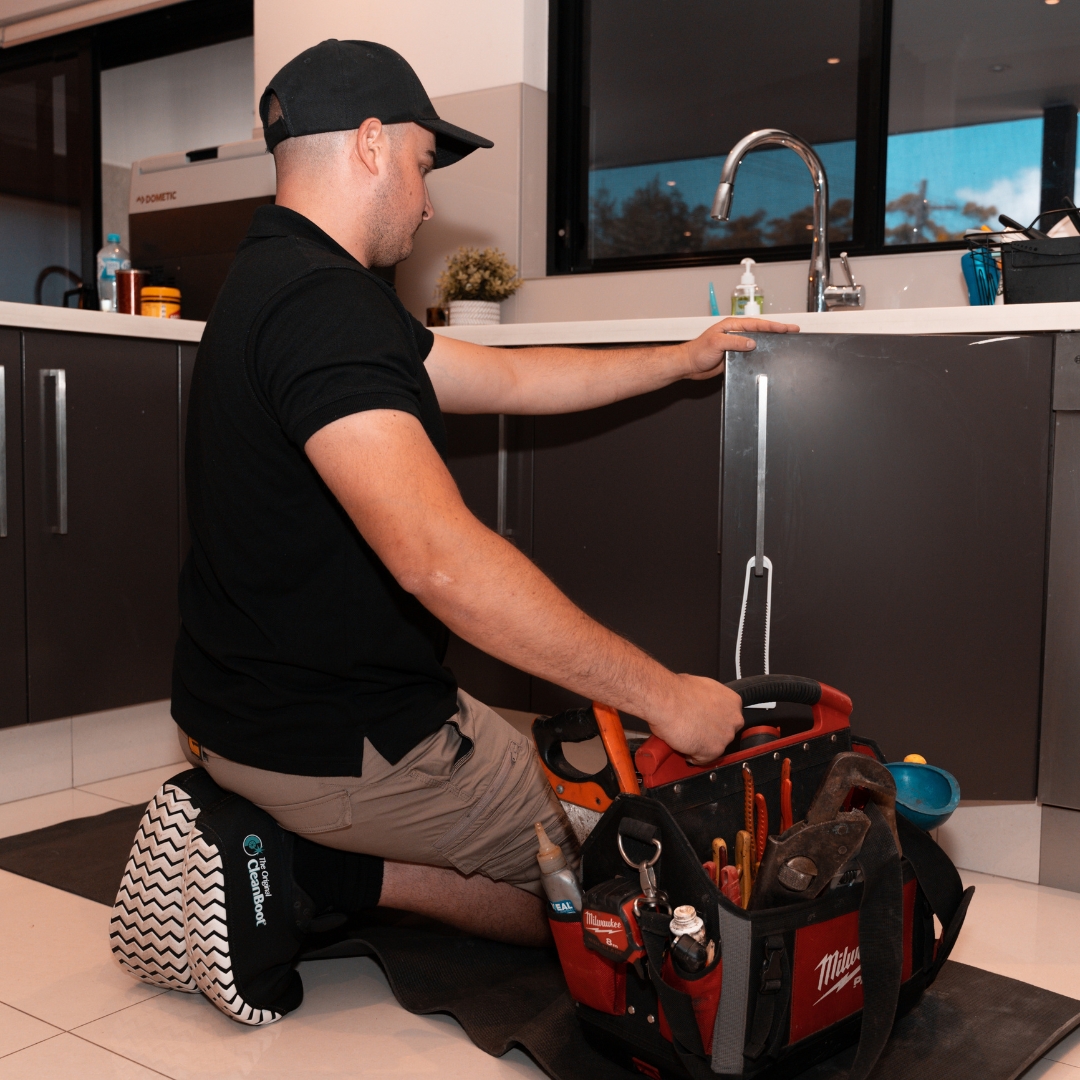DIY Home Plumbing Inspection
While professional plumbing services are essential for major repairs, there are several DIY home plumbing inspection checks that you can perform with little-to-no plumbing experience – helping you catch potential issues early, saving you both time and money in the long run.
In this blog, we’ll guide you through our comprehensive checklist to perform your own plumbing inspection and ensure the integrity of your plumbing system.

Check For Leaks
Leaks are among the most common plumbing issues homeowners face. They can waste up to 2000 litres of water a month, cause structural damage and lead to mould growth. Start your DIY inspection by checking all visible pipes, taps, showerheads and connections for any signs of dripping or pooling water. Pay extra attention to areas under sinks, dishwashers, washing machines, around the water heater, toilets and both the hot and cold water lines for leaks.
Assess Drain Performance
Slow, clogged or blocked drains are not only an inconvenience, but can also indicate deeper plumbing issues. Test all sinks, showers, and bathtubs to ensure that water drains quickly and smoothly. If you notice any slow drainage, try using a plunger to clear minor clogs. For stubborn clogs, consider using natural solutions like a mixture of baking soda and vinegar before resorting to chemical drain cleaners, which can be harsh on your pipes and the environment.
Inspect Toilets
Check for any leaks around the base of the toilet and ensure that it flushes properly. If you hear the toilet running constantly, you might need to adjust or replace the flapper valve. This simple fix can save you money on your next water bill!
Test Water Pressure
Low water pressure could be a sign of sediment buildup in your pipes or a hidden leak. Ensure you check the water pressure in all taps and showers – if you discover you’re experiencing low pressure in multiple areas, it’s recommended to consult a professional plumber to diagnose and address the issue.
Evaluate The Water Heater
A well-maintained water heater is essential for hot showers and various household tasks. Pay attention for any visible signs of leakage or corrosion around the water heater and ensure that it’s operating efficiently. If you have a tankless water heater, follow the manufacturer’s guidelines for maintenance. Flushing the tank annually can prevent sediment buildup and extend the lifespan of the unit.
Examine Visible Pipes
As the homeowner is responsible for maintaining the pipes and fittings of their property, be sure to inspect all visible pipes, joints and connections in your home, such as those under sinks and in the basement to look for signs of corrosion, rust or bulging as these can indicate potential weak points in your plumbing system. Addressing these minor issues early can prevent major pipe failures down the line.
Check Sump Pump Functionality
If your home has a basement, a sump pump plays a vital role in preventing water damage during heavy rain or flooding. Test your sump pump by pouring a bucket of water into the pit. It should activate and pump the water out. Ensure that the outlet pipe is directing water away from your foundation to prevent flooding.
Test Shut-Off Valves
Knowing the location of shut-off valves is vital in case of a plumbing emergency. Test the shut-off valves for sinks, toilets, and appliances to make sure they’re functioning properly. If any valve is difficult to turn or leaking, consider replacing it to avoid complications when you least need it!
Inspect Outdoor Plumbing
Outdoor plumbing systems means they can be vulnerable to natural elements. Check outdoor hoses, taps, gutters, downpipes and irrigation systems for leaks, corrosion or damage. If you have a sprinkler system, test it to ensure even water distribution.
Be Aware of the Septic System
If your home is connected to a septic system, schedule regular inspections and pump-outs as recommended by professionals to prevent septic system backups and costly future repairs.
Monitor Water Meter
Keep an eye on your water meter’s readings when no water is being used as a noticeable change in readings could indicate an undetected leak in your plumbing system. If you suspect a leak but can’t locate the cause of it, consulting a professional plumber is recommended.
Safety Check for Gas Lines and Appliance Connections
If your home uses gas for heating or appliances, ensure that gas lines and connections are secure and leak-free. If you detect a gas odour or suspect a leak, evacuate your home immediately and contact a professional.
Conclusion
Maintaining a well-functioning plumbing system is crucial for the comfort and safety of your home. Performing a DIY home plumbing inspection using this comprehensive checklist can help you catch any potential issues early, saving you time, money and the stress of dealing with more costly major plumbing problems in the future.
Remember, while these checks are valuable, professional plumbing services are essential for complex repairs and to address any issues you may not be equipped to handle. Get in touch with Water Workx Plumbing today!

